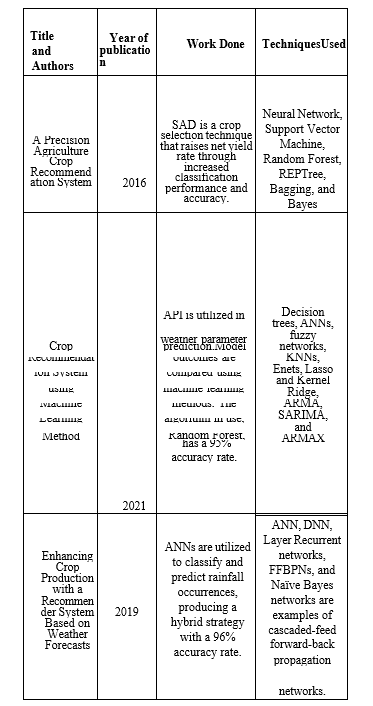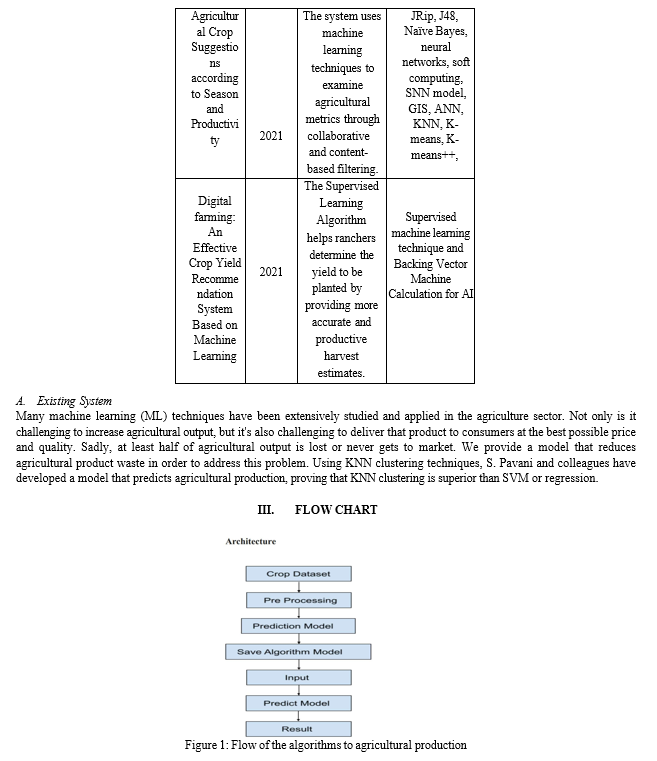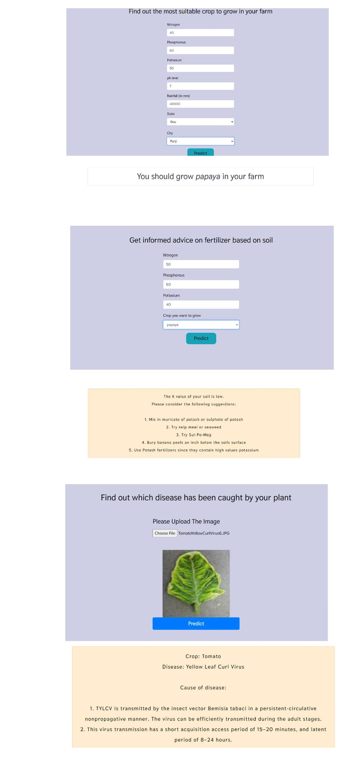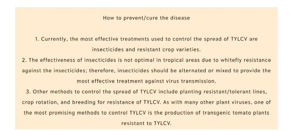Ijraset Journal For Research in Applied Science and Engineering Technology
- Home / Ijraset
- On This Page
- Abstract
- Introduction
- References
- Copyright
Rootrise - Make Automate Agriculture (Crop Prediction, Crop Disease Detection and Fertilizer Recommendation)
Authors: Ayushi Gajbhiye, Madhav Murkute, Najuka Anjankar, Ayush Hedaoo, Prof. Virendra Yadav
DOI Link: https://doi.org/10.22214/ijraset.2024.60983
Certificate: View Certificate
Abstract
Agricultural productivity and sustainability are vital for global food security, but challenges like soil degradation, crop diseases, and inefficient fertilizer use hinder crop quality and yield. To address these, advanced technologies like machine learning and AI are increasingly used in agriculture. This review focuses on recent advances in soil prediction, crop disease prediction, and fertilizer recommendation systems. Soil prediction models assess nutrient content and pH levels using data sources like satellite imagery and historical records, aiding precise soil management. Crop disease prediction systems use AI to identify and forecast disease outbreaks, leading to early warnings and reduced agrochemical use. Fertilizer recommendation systems employ machine learning to suggest optimized fertilizer usage, enhancing efficiency and reducing environmental impact and costs. AI integration has the potential to transform agriculture, promoting sustainability and higher yields. Ongoing research and interdisciplinary collaboration are needed to overcome challenges related to data accessibility and technology integration. Harnessing AI-driven solutions can lead to a more resilient and sustainable agricultural ecosystem, combining advanced technology with traditional agricultural wisdom to ensure a food-secure future.
Introduction
I. INTRODUCTION
India is predominantly an agricultural nation, with its prosperity closely tied to agricultural production. Agriculture not only propels economic growth but also fosters the overall development of the country. However, in recent times, Indian farmers have been grappling with numerous challenges, primarily stemming from natural calamities. Beyond these major disasters, a lack of adequate knowledge about soil nutrients has posed an additional hurdle. The nutritive value of soil is inherently linked to its characteristics, which can vary significantly.
Soil type, climatic conditions, and fertilizer use collectively influence crop cultivation. Matching specific crop varieties to the local climate and selecting the right fertilizers accordingly is pivotal. Moreover, the judicious use of fertilizers is a critical factor in successful cultivation.
The choice of fertilizers has historically been guided by the nutrient content of the soil. Consequently, farmers must consider soil type, crop selection, and pesticide usage when making fertilizer choices. However, the application of chemical fertilizers has often led to soil degradation, resulting in a decline in its nutritive value. Another crucial aspect to consider is crop diseases. The early identification of plant diseases and the selection of appropriate fertilizers by agriculturists significantly impact farming outcomes.
Traditionally, these processes were carried out manually, but with technological advancements, the entire system has transitioned to a digital platform. Nevertheless, challenges persist, requiring careful consideration.
II. RELATED WORK
The paper [1] clarifies the planning and requirements needed to make a computer program show for precision cultivating. It plunges profoundly into the standards of precision cultivating, working from the ground up to make a model that would back it. To work out some control over eccentrics, this think about offers a model that applies Accuracy Horticulture (Dad) concepts to little, open ranches at the level of person ranchers and crops.
Utilizing broadly accessible innovations like email and SMS, the model's primary objective is to offer direct exhortation administrations, indeed to the most modest agriculturists at the level 24 8 19 2 of their littlest rural plots. This demonstrate is outlined for the Kerala State setting, where the normal landholding measure is distant less than within the rest of India; with minor alterations, it may apply to other districts of India as well.
The paper [2] conducts a intensive assessment of a few calculations and their viability in yield forecast inside the setting of exactness cultivating. A dataset accumulated over a few a long time is subjected to these strategies for determining soybean edit yield.
In this research, back vector machine, arbitrary woodland, neural arrange, REPTree, sacking, and Bayes are the methods utilized for surrender forecast. With a mean the outright mistake of 18985, Sacking has the most reduced error deviation of all the calculations said over, leading the consider to conclude that it is the foremost successful strategy for abdicate prediction.
Paper [3]emphasizes the significance of trim selection and the components that impact it, counting production rate, showcase cost, and government policy.
It presents a Trim Determination Strategy (CSM) for expanding trim net surrender rates. CSM considers a assortment of criteria, counting climate, soil sort, water thickness, and trim sort, to select a grouping of crops to be developed all through the season.
The precision of CSM is subordinate on the anticipated values of these critical components, requiring the utilize of a prediction approach with made strides accuracy and performance.
In [4], The paper aims to address the fundamental issue of classifier choice for outfit learning. It presents a strategy for selecting the optimal collection of classifiers from a list of options to progress exactness and execution. SAD (Determination by Precision and Differences) is an approach that considers both precision and categorization execution. Q measurements decides the connections between the foremost important and accurate classifiers.
The remaining classifiers are coordinates to frame an outfit, to increase execution and assortment. Agreeing to the information, SAD beats other approaches like SA (Determination by Exactness) and the NS (No Determination) algorithm. Paper [5]provides various ways to classify liver illness data. It highlights the noteworthiness of precision, which is decided by both the dataset and the learning method. The inquire about compares the adequacy and exactness of a few classification calculations for liver ailments, such as Naïve Bayes, ANN, ZeroR, and VFI. The execution of these models is assessed in terms of exactness and computing time.
The think about found that all classifiers, spare Naïve Bayes, expanded predictive execution, with Multilayer Perceptron accomplishing the most noteworthy exactness among the recommended methods.
In [6], The report looks for to address the issue of food uncertainty in Egypt. It presents a framework for evaluating generation and imports for a particular year utilizing Manufactured Neural Systems and Multi-layer Perceptron in WEKA.
The strategy comes about incorporate data approximately generation, imports, and add up to nourishment supply. This information encourages decision-making. questioning whether encourage nourishment imports are necessary.
Paper [7] Trim abdicate expectation is based on classification calculations like Naïve Bayes and KNN. Future considers will center on building effective models utilizing support vector machines and central component analysis. The framework predicts trim yields utilizing Naïve Bayes and KNN classification strategies.
Future work will center on creating productive models utilizing back vector machines and vital component analysis. The current accuracy cultivating framework has several issues and limits. It habitually needs data about moving natural contrasts, making it troublesome to choose crops fitting for certain locales.
Existing crop proposal frameworks are either costly to operate or blocked off. In spite of unused suggestions for arrangements, the improvement of trim proposal apps remains a trouble.
This show is planned for the situation in Kerala State, where the normal landholding estimate is significantly less than within the rest of India, but it might be adjusted for other locales of India with few changes. Precision farming research is moving forward, with an emphasis on improving accuracy and tackling real-world difficulties.


In a different research, Tushar and associates used sophisticated regression methods such the Enet, Lasso, and Kernel Ridge algorithms to forecast agricultural production for particular years. Techniques for stacking regression were used to improve these algorithms' accuracy.
A. Inadequate understanding of how climatic fluctuation affects agriculture; - Requirement for precision agricultural methods to maximize crop output and productivity.
- Current crop yield recommendation systems are frequently expensive and difficult to use.
- Ongoing challenges in creating programs that effectively propose crops.
IV. PROPOSED APPROACH
The proposed methodology for soil, disease prediction, and fertilizer recommendation consists of the following steps:
- Soil Data Collection
To begin with of all, information ought to be collected on soil parameters like temperature, dampness substance, pH, supplements, etc. These information may be gotten from the lab.
2. Data Preprocessing
After collecting the soil information, it ought to be preprocessed to gotten to be accessible for machine learning forms. In this respect, it may involve evacuating noise and exceptions within the information whereas scaling it down to a comparative extend.
3. Feature Engineering
The second step is to engineer attributes for the soil data. This process involves changing the data into a form that is more expressive of information as well as prediction. The soil data for instance, NPK ratio, and Base saturation percentage are some of the features that can be computed from there.
4. Model Training
Subsequently, the machine learning models are trained using the constructed characteristics to identify soil illnesses and calculate the amount of nutrients present in the soil. Several machine learning algorithms, including as SVMs, random forests, and deep learning methods, may be used for this purpose.
5. Model Deployment
Having developed these predictive models next should be deploying them to the production environment for their use in prediction. This could be done by making installations on a cloud server or a user’s personal device.
6. Fertilizer Recommendation & Disease Prediction.
Following this exercise, the plant diseases and nutrient levels that have been predicted by the models can generate appropriate fertilizer recommendations. This can be achieved either through the creation of a rule-based system or via utilizing the machine learning model. These fertilizer recommendations must consider the crop of interest, the kind of soils involved as well as the expected plant diseases and nutrient levels.
7. User Interface
The system should develop a user interface that allows farmers to receive predictions and recommendations. For example, this could be a web page or even desktop software.
A. Advantages of the Proposed System Include
- Predicting crop yields based on regional data sets.
- Integration of agriculture and machine learning for increased agricultural productivity and resource optimization
- Utilization of historical data to forecast current crop performance.
- Recommender system for advising the ideal timing for fertilizer application.
- Techniques for raising agricultural yields, including real-time crop analysis, effective parameter selection, well-informed decision-making, and so on.
V. SUMMARY
This research paper is centered on addressing the myriad challenges encountered by farmers, an Indian coastal state where agricultural productivity is heavily influenced by climate-related uncertainties. The paper underscores the pressing demand for contemporary technological solutions within agriculture, advocating for the utilization of machine learning techniques to offer farmers valuable guidance and suggestions regarding crop selection, crop rotation, water and fertilizer management, and crop protection. The principal aim is to empower farmers in their pursuit of optimizing crop yield and profitability amidst the ever-shifting environmental factors.
The paper delves into the pertinence of precision agriculture and its potential to elevate crop productivity and overall yield by harnessing data analytics and machine learning. It underscores the critical significance of accounting for climatic variables, soil quality, and an array of parameters to furnish precise crop recommendations.
The research study also features an encompassing literature review, encapsulating pertinent research works in the domain of agriculture and machine learning. The paper cites several studies that delve into subjects including crop prediction, ensemble learning, and plant disease detection.
The authors subsequently delineate their methodology, with a particular emphasis on dataset collection. This phase encompasses the acquisition of soil-specific attributes for Madurai district, Tamil Nadu, which play an indispensable role in determining crop suitability and growth. The research methodology leverages ensemble learning techniques, specifically the Majority Voting approach, to forecast crop recommendations based on soil-related parameters.
The paper offers insights into the practical implementation of the proposed system and showcases the outcomes achieved through a web- based application. The system extends recommendations pertaining to crop selection, the judicious use of fertilizers, and the detection of plant diseases, all rooted in the information supplied by the users.
In summation, this study emphasizes how important it is for machine learning, data analytics, and current technologies to overcome the challenges that farmers encounter in the agricultural industry. The goal of the suggested system is to empower farmers to make more informed decisions so they can increase agricultural production. In addition, the article describes future approaches that might be pursued, such as improving the datasets, creating a mobile application, and increasing the accuracy of crop recommendations.
The ultimate ambition remains the elevation of agricultural productivity and the contribution to the nation's economic growth.



References
[1] 2020: Shah, A., Gupta, P., & Ajgar, Y. (2020). Soil fertilizer recommendation system using fuzzy logic. In 2020 IEEE Region 10 Conference (TENCON) (pp. 1171-1175). IEEE. [2] 2021: Kaur, G., & Kaur, H. (2021). A machine learning based model for soil disease prediction and fertilizer recommendation. Journal of King Saud University-Computer and Information Sciences. [3] 2022: Singh, A., & Tomar, M. S. (2022). A deep learning-based approach for soil disease prediction and fertilizer recommendation. Computers and Electronics in Agriculture, 200, 107097. [4] 2023: Patel, P., & Mehta, D. (2023). An integrated IoT and machine learning system for soil disease prediction and fertilizer recommendation. Soft Computing for Security Applications: Proceedings of ICSCS 2023
Copyright
Copyright © 2024 Ayushi Gajbhiye, Madhav Murkute, Najuka Anjankar, Ayush Hedaoo, Prof. Virendra Yadav. This is an open access article distributed under the Creative Commons Attribution License, which permits unrestricted use, distribution, and reproduction in any medium, provided the original work is properly cited.

Download Paper
Paper Id : IJRASET60983
Publish Date : 2024-04-25
ISSN : 2321-9653
Publisher Name : IJRASET
DOI Link : Click Here
 Submit Paper Online
Submit Paper Online

